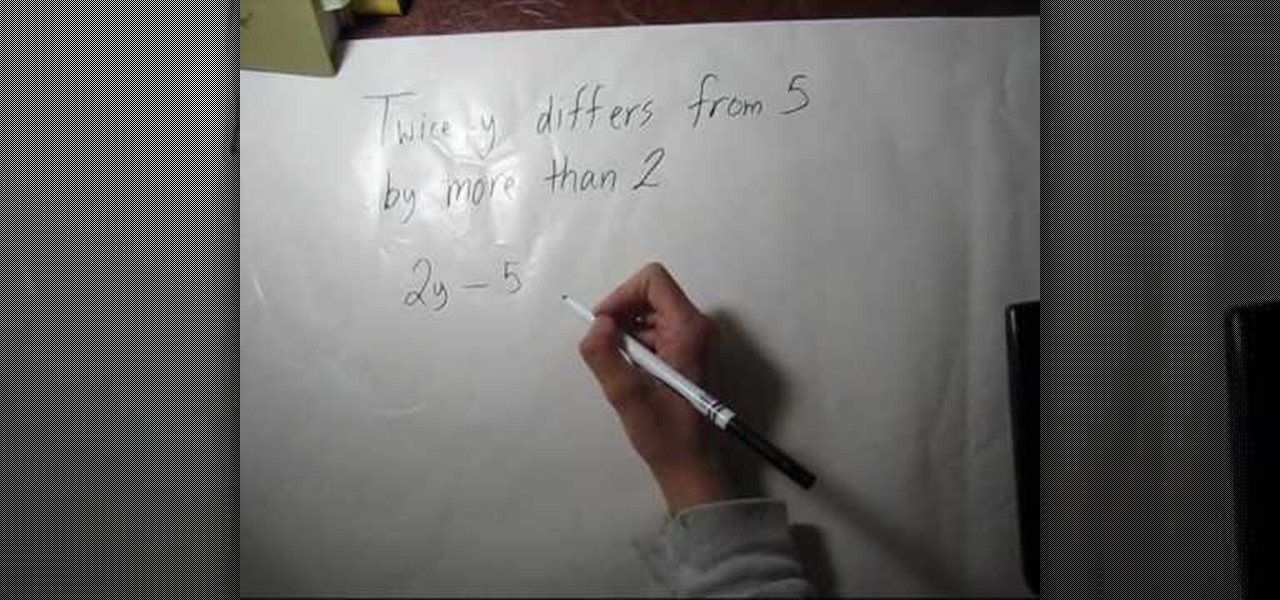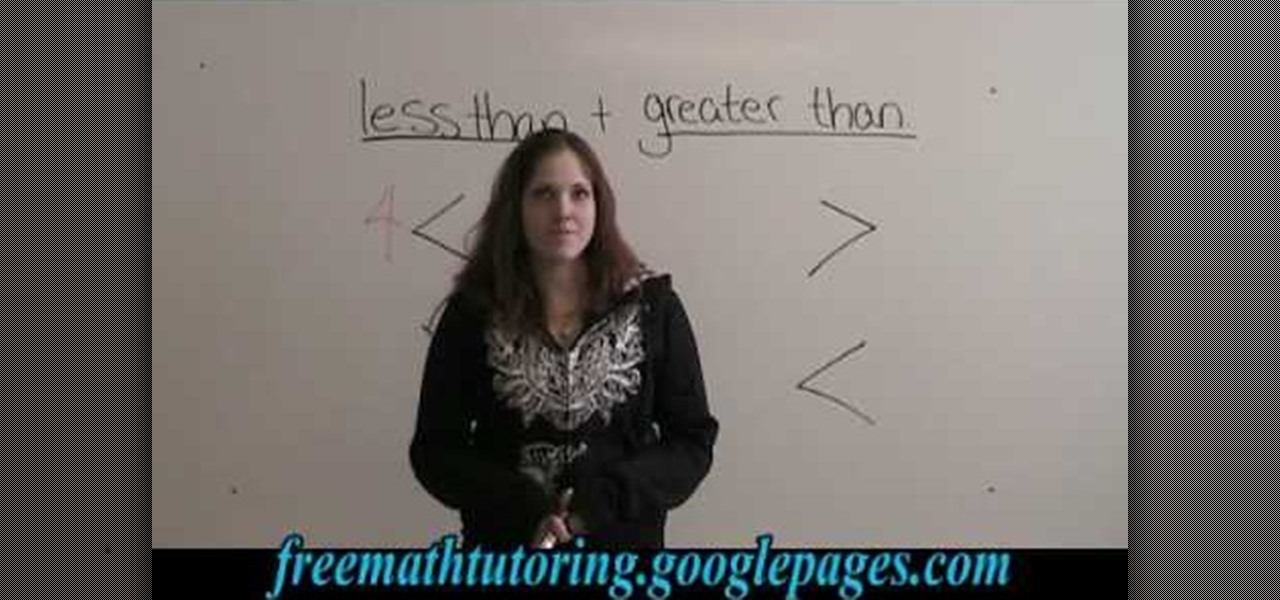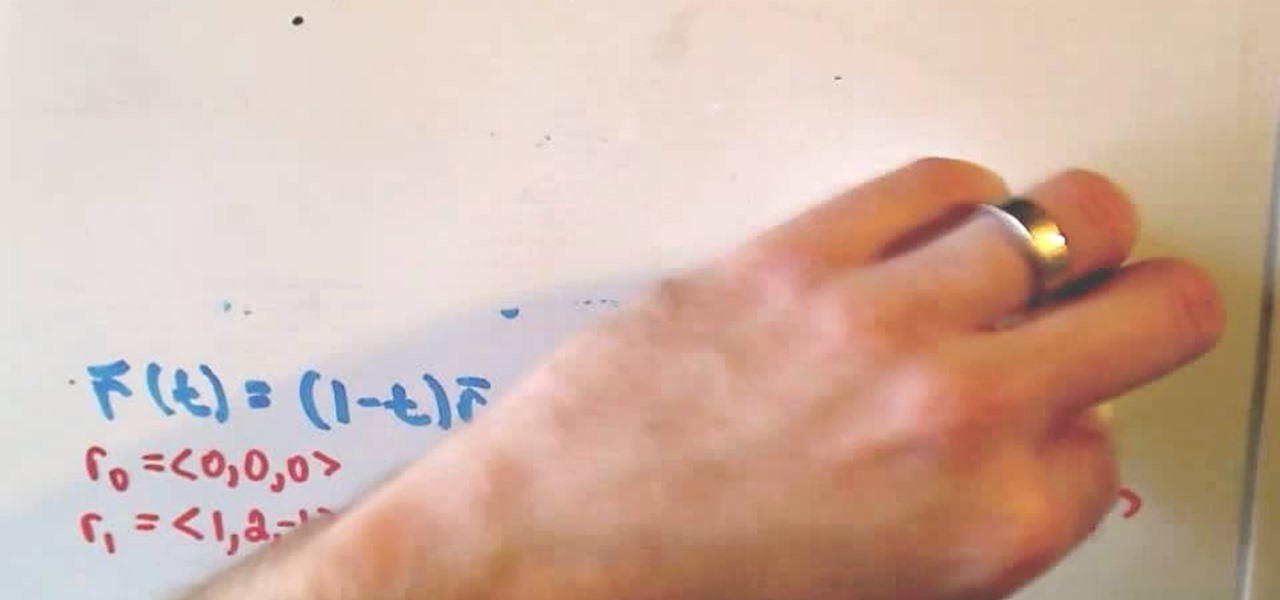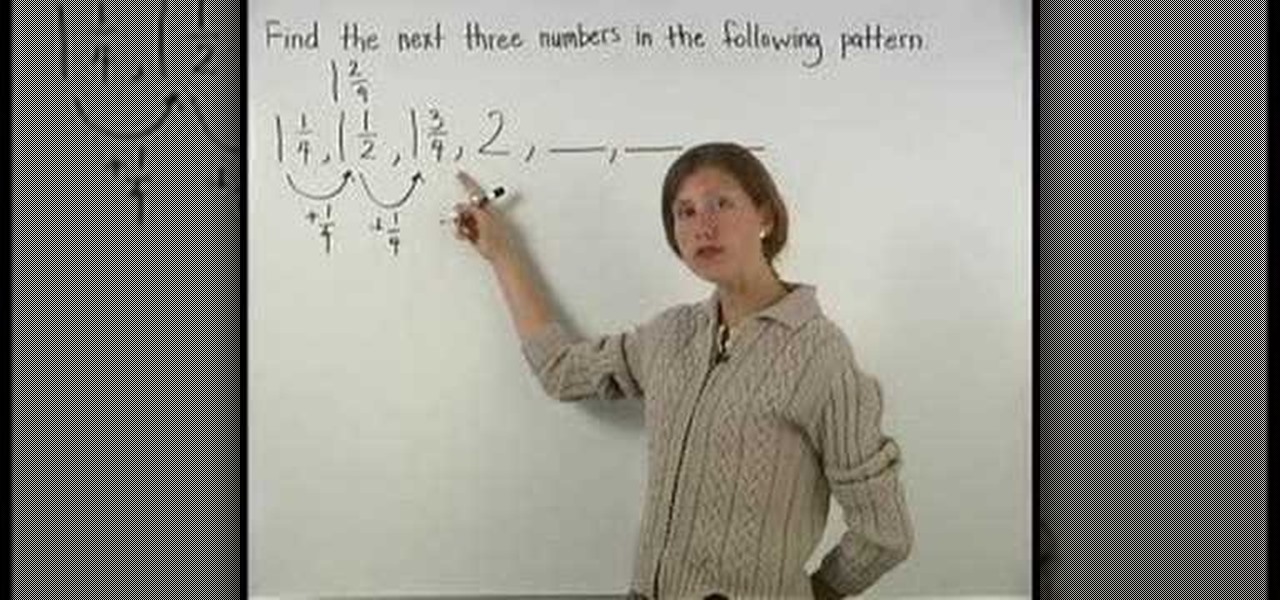Active Math Posts


How To: Prove some random trigonometric identities
This video shows the method to prove some trigonometric identities. This involves the use of algebra and knowledge of basic trigonometric identities. The video demonstrates three examples to illustrate this problem and its solution. The first problem shows a relatively simple problem involving sines and cosines. The video shows some basic algebra steps to simplify the problem and prove the identities. The second example involves a slightly complicated problem involving square of combination o...
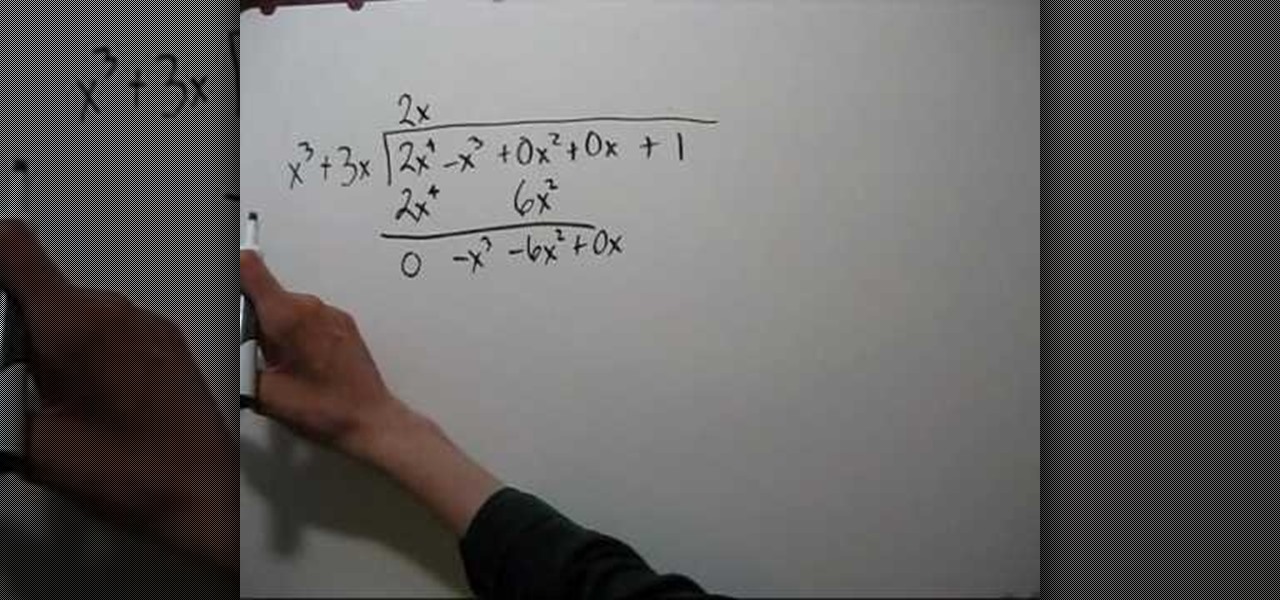
How To: Find slant (oblique) asymptotes of rational functions
In this educational video the instructor shows how to find the slant asymptotes of rational functions. Slant or oblique asymptotes occur when the degree of the numerator is exactly one greater than the degree of the denominator of the rational function. The way to find the equation of the slant asymptote from the function is through long division. In this long division you divide the numerator with the denominator by following the long division method as shown in this video. Before dividing i...
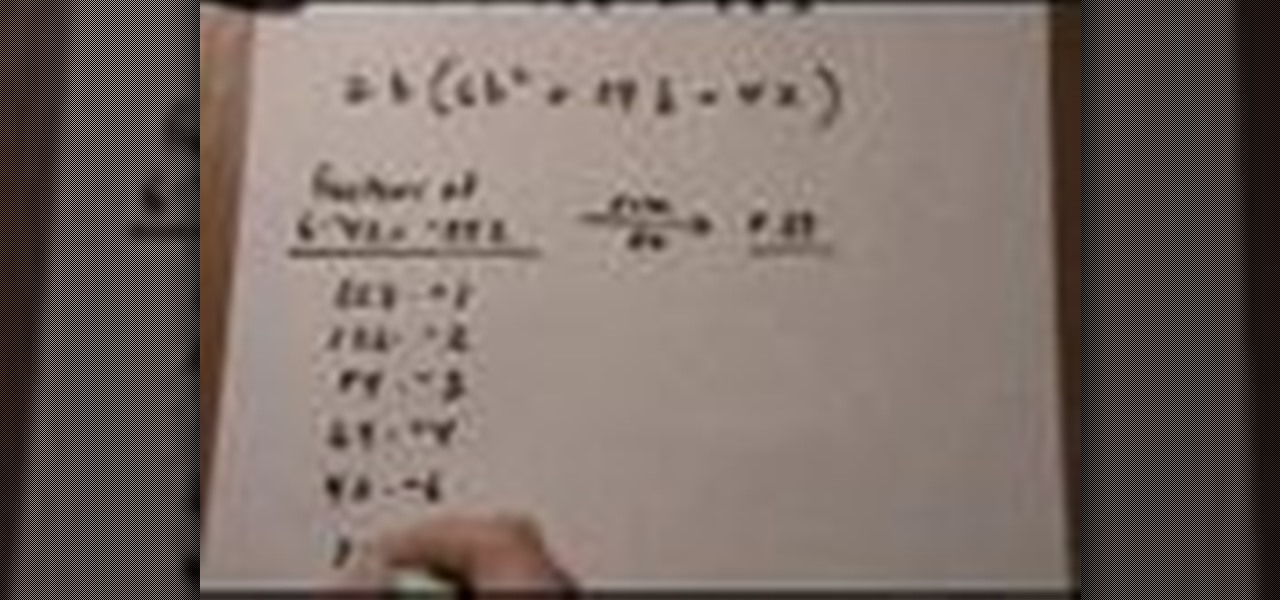
How To: Factor trinomials by GCF, grouping, unfoiling
Factoring trinomials can be a daunting task for many people. If your in need of extra help Denise Robichaud has created a step by step video that shows how to factoring trinomials by the greatest common factor (GCF), grouping, and unfoiling. She gives tips that help get you started, for example when factoring a trinomial first try to pull out a GCF, and if you have 4 terms try factoring by grouping. The video gives you a chance to work at your own pace. Seeing factoring problems solved with a...

How To: Multiply mixed numbers easily
This video tutorial shows you how to multiply mixed numbers. When doing this the first thing that you want to do is put the mixed numbers into a improper fraction form. From this step you can simplify the numbers based on what you are using. In this case you can take out the 3 and 21 and simplify it to 1 and 7 respectively. From here you do the basic multiplication to get one improper fraction. Then turn this number back into a mixed fraction to complete your problem.
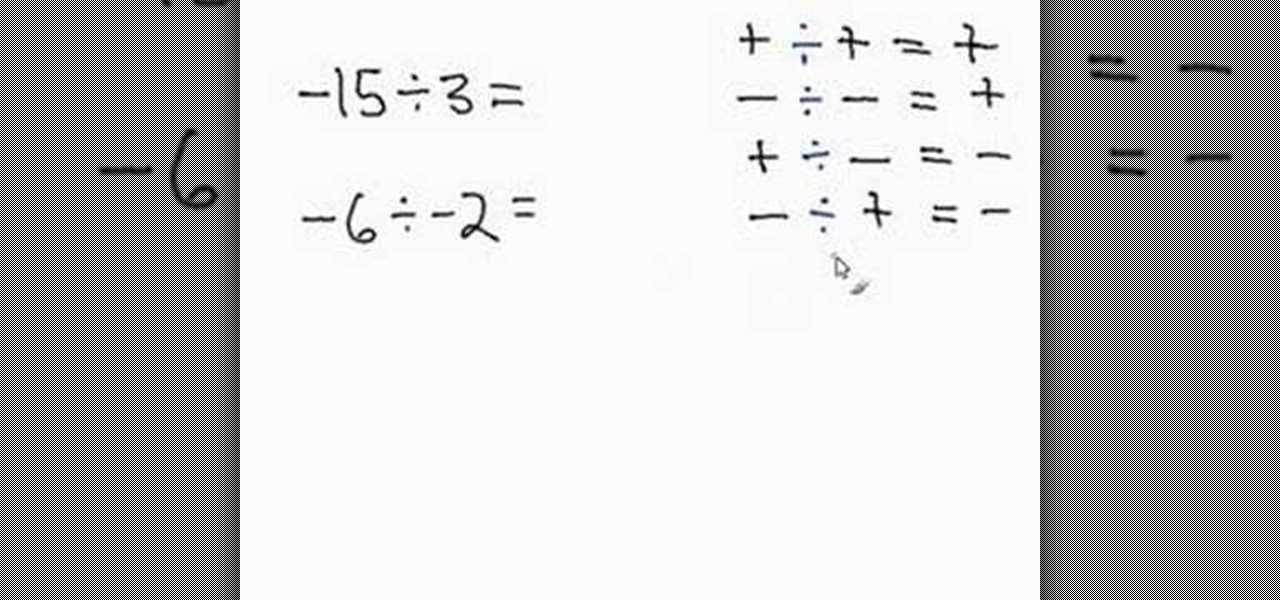
How To: Divide integers quickly and easily
This tutorial explains how you can divide integers. Dividing integers is similar to multiplying integers. A positive divided by a positive gives you a negative number. A negative divided by a negative gives you a positive number. And a positive divided by a negative, or a negative divided by a positive, will results in a number. Some examples: -15 divided by 3. In this problem we're dealing with a negative divided by a positive. So, the answer will be negative. The answer is -5. Another examp...

How To: Derive the basic area of a triangle
In this video tutorial, viewers learn how to solve the area of a triangle. The formula for the area of a triangle is A = ½ x b x h or bh/2. The base of the triangle is always at the bottom; it is the side that the triangle sits on. The height is the length between the base and the highest point of the triangle. Multiply the base and height of a triangle; then divide by two or multiply by half. The measurement unit of the answer should be squared. This video will benefit those viewers who need...
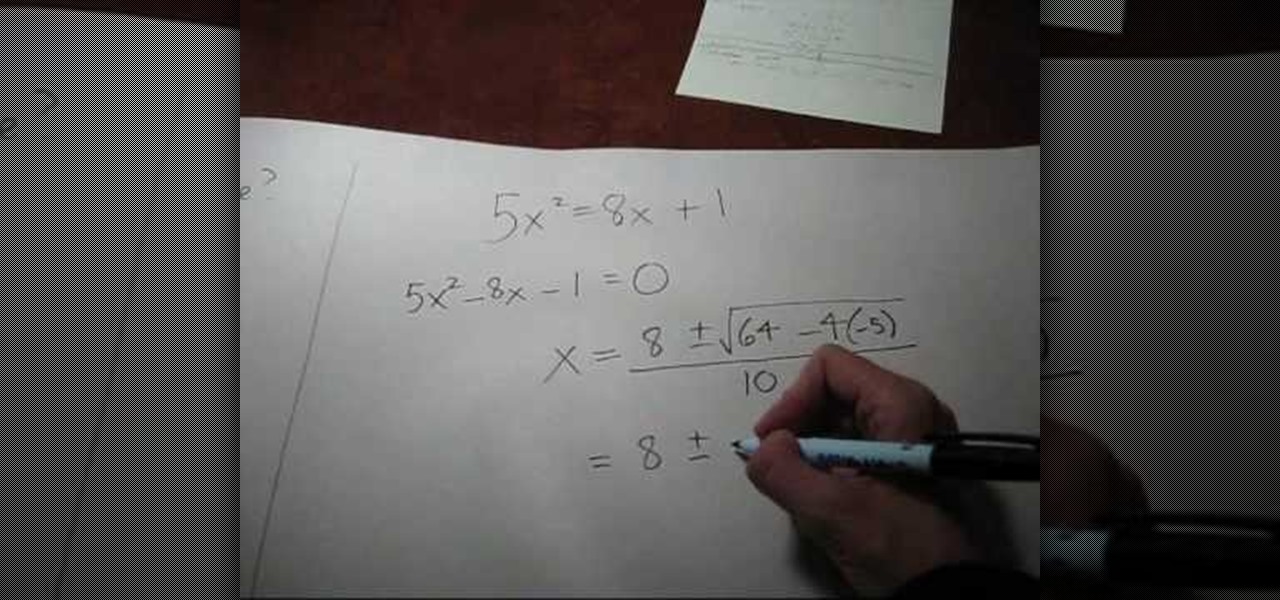
How To: Simplify a quadratic formula result
In this video the tutor shows how to simplify a quadratic formula result. You can solve a quadratic equation using the quadratic formula. The first thing you have to do when given the quadratic equation is bring all the terms to one side so that you have a zero on the other side of the equals to sign. Now the formula to calculate the roots of the quadratic equation ax*x + bx + c = 0 is x = (-b + root of(b*b - 4*a*c) ) / 2 * a. The other root can be obtained by using the minus sign before the ...

How To: Find the greatest common factor (GCF)
This video tutorial shows you the proper way to find the GCF, or greatest common factor. While this is not necessary, the video shows a method of drawing a T chart. List both the numbers that you need to find the GCF, then list there factors, including the number 1. Once you display your factors of both numbers it is a clear cut visual of what the GCF is. In the case of the problem on the video the number 4 has factors of: 1, 2, 4 and the number 20 has factors of: 1, 2, 4, 5, 10, and 20. Ther...

How To: Simplify square roots easily
robichaudd teaches you how to simplify square roots. When you're dealing with variables, even powers and you want to find out the square root of it, you follow the process. Divide the power by the root, which is two, because it's a square root, that gives you what comes out. If we have square root of x squared, the result would be x. So the square root of x to the 6 is x cubed. You simply divide the power by two, since we are dealing with square root. Then square root of 36 times x square is ...

How To: Figure out circumference with given radius
Here Mr Misonet tries to teach to compute circumference of a circle when radius is given. First he convince you the formula. The circumference of a circle is proportionately equals to "pie" times of its diameter,where the value of "pie" is equal to 3.14 and diameter is equal to two times radius. Then he puts the value of the diameter of the given circle and calculate the value of the circumference and also make you understand how to multiply the numbers with decimals. And lastly he makes your...

How To: Simplify algebraic equations w/ the minus-one trick
Just follow a few steps to simplify algebra with the minus one trick. First step is to take two algebraic equations with having numerator and denominator algebraic equations. Second step is to divide the denominator with numerator. For example, it have like -c/c, it gives like answer as -1, but we have another type like (c-a)/(a-c) - to solve these types of steps, like multiply numerator with minus(-), it gives the common the minus and -(a-c)/(a-c), then it gives -1 as a answer.

How To: Multiply or divide rational expressions
318770 Multiply or divide rational expressions. Here Ms Robichaudd guides you nicely that how to multiply or divide rational expressions. She starts with divide and simplify. In first step she shows you how she multiplied and flip. And then to simplify it more she took out the common factor from the bracket to cancel the same numbers from numerator and denominator. In next step she multiplied across and got the final answer. And then she gives other example, Multiply and Simplify. Here again ...
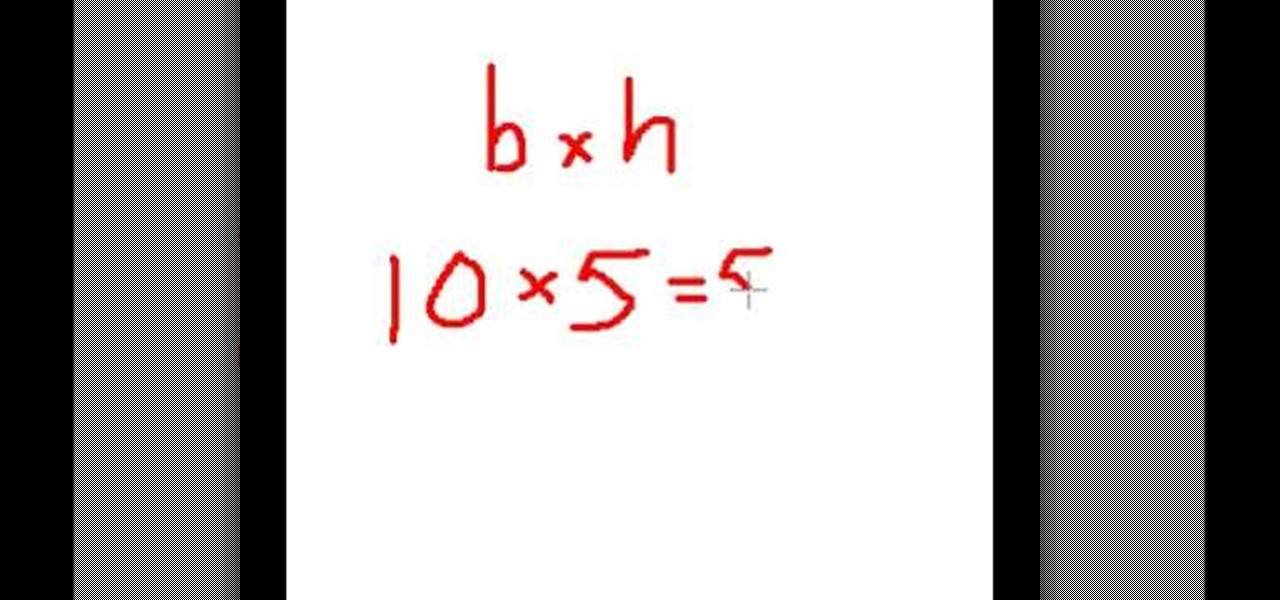
How To: Find the area of triangles
Are you horrible at math? Are you unable to calculate the area of a triangle? This video will teach you how to calculate the area of a triangle! By showing you every step towards solving the area of a triangle slowly, it feels as though a tutor is actually teach you in person. Upon finishing the video, you can finally understand that homework problem that asks for the area of a triangle. Watch this video today! (It's cheaper than a tutor.)
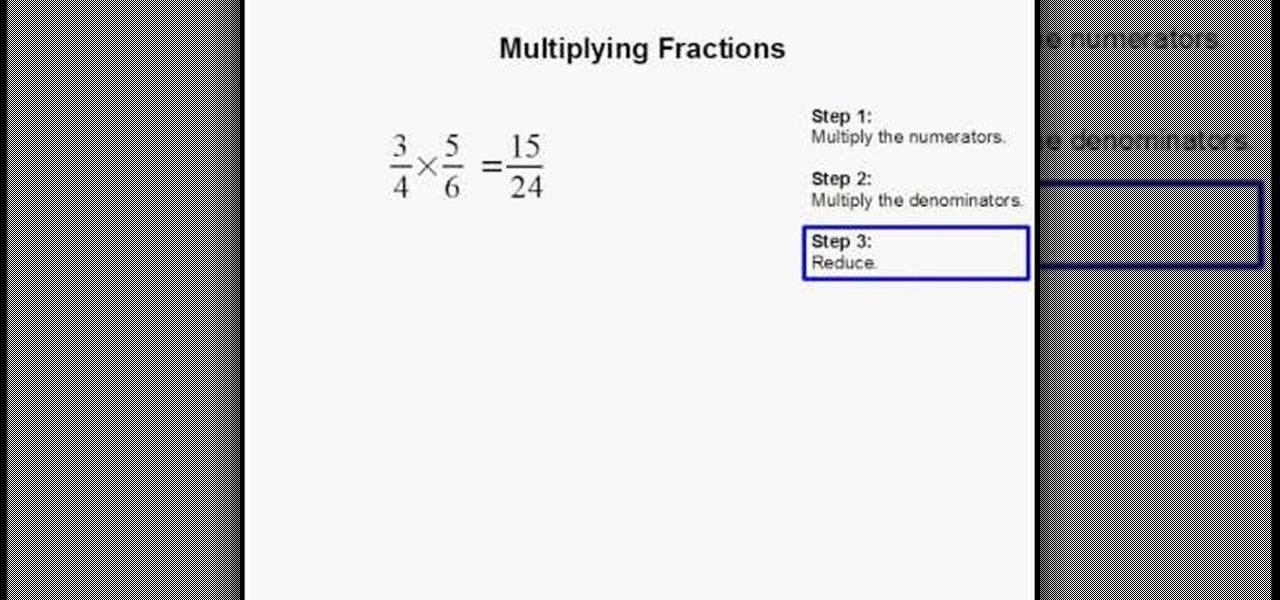
How To: Multiply fractions together
Do you hate fractions? Do you hate fractions even more when you have to multiply fractions together? This video will show you how to multiply fractions with ease. By the usage of a simple step-by-step process, the video demonstrates the steps used to multiply a fraction as well as explaining each of the steps in words rather than expecting a person to understand what is happening without prior knowledge. By finishing this video, you'll be able to multiply fractions!
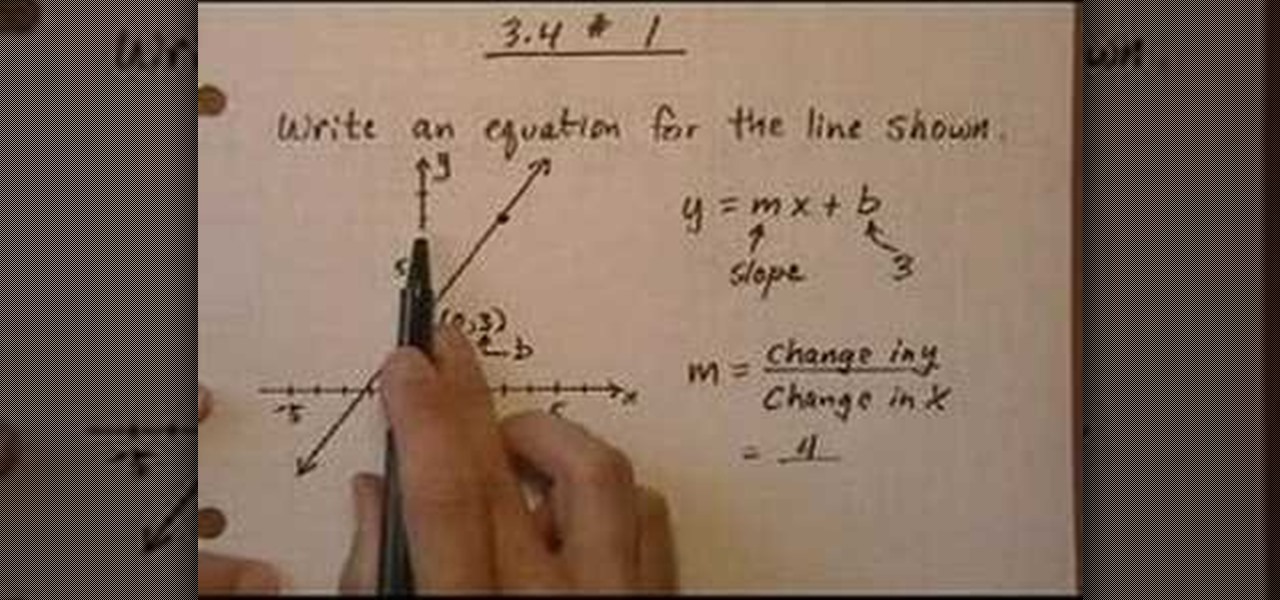
How To: Find the equation of a line easily
This is the video about how to Find the equation of a line. The equation of a line with a defined slope m can also be written as follows: y = mx + b where m is the slope of the line and b is the y intercept of the graph of the line. The above form is called the slope intercept form of a line. Step1 Set m to a fixed value (m = 1) and change b (b = 1, 2, 3, 4, -1, -2, -3, -4). Compare each value of b to the y-intercept of the line obtained. Step2 Set b to a fixed value (b = 1) and change m (m =...
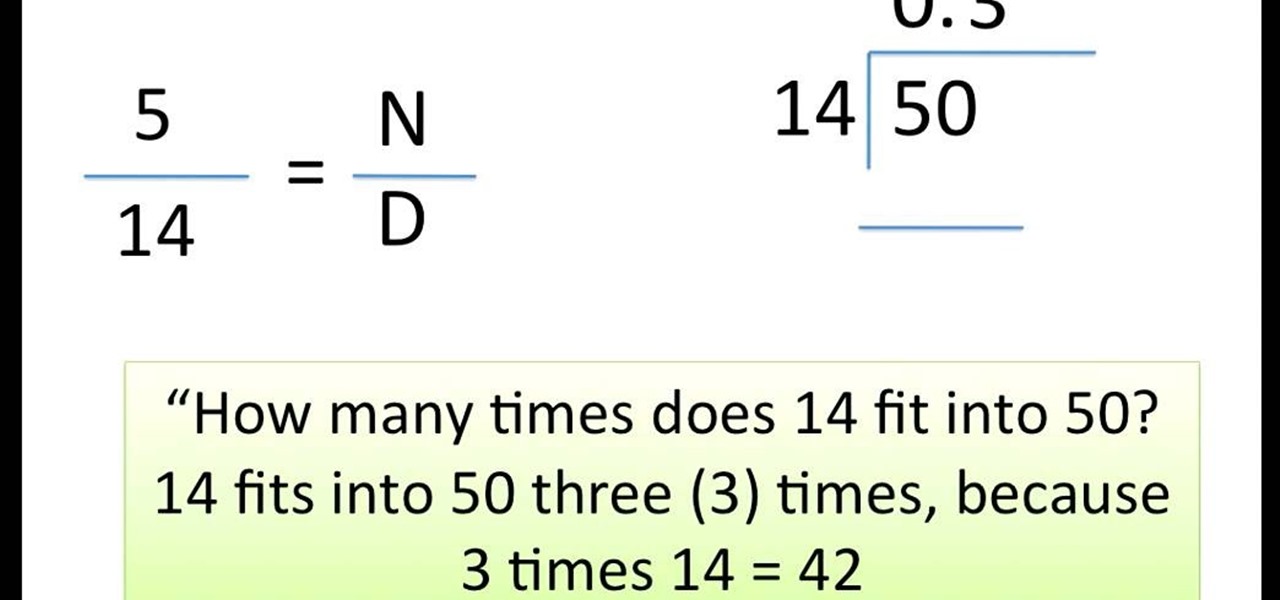
How To: Divide proper fractions
This video shows you how to easily divide proper fractions. In the first step, you have to calculate how many times does the denominator fit into the numerator. You need to divide the numerator by the denominator. If the denominator does not fit into the numerator, you have to write 0, followed with a point, at the top of the calculation ("0."). Next, you add a 0 next to the numerator (multiply it by 10). Now, you have to calculate how many times does the denominator fit into the numerator ag...

How To: Solve a quadratic equation by quadratic formula
This video is describing how to solve quadratic equation by quadratic formula. The quadratic equation is given in the video and we will use quadratic formula. We will put the equation in the formula our equation is 4psquare= -23p - 15. Now add 23 to both sides and then add 15 to both sides now we will get an easy equation, 4 will be used as a and 23 will be used as b and 15 will be used as c and we have a=4,b=23 and c=15 put these values in the quadratic formula and we have the value of p=5.-...
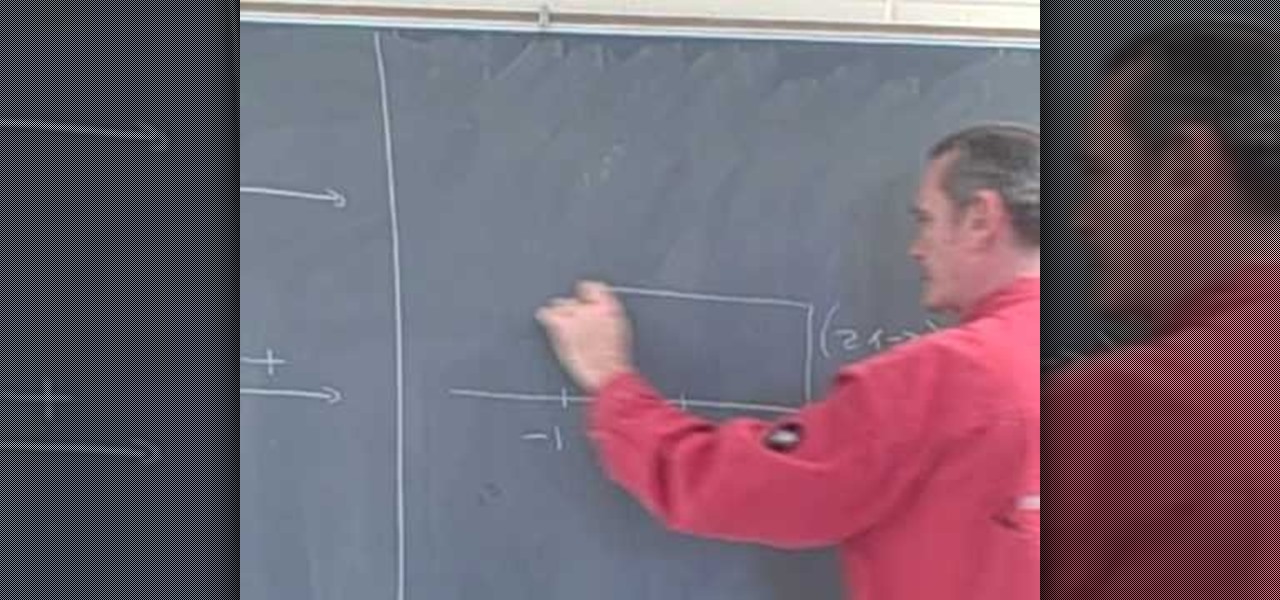
How To: Solve rational inequalities using sine charts
When you are solving inequality for a rational function you don't do it the same way as you would solve an equality. Now the instructor shows how to solve an inequality with the help of an example. Now to solve an inequality which is in the form a/b first take the numerator and denominator as separate equations of two lines. Now graph the two lines on coordinate axes. Using the graphs of the lines plot the intercepts of the equations on the number line noting down the sings. Now you can compa...
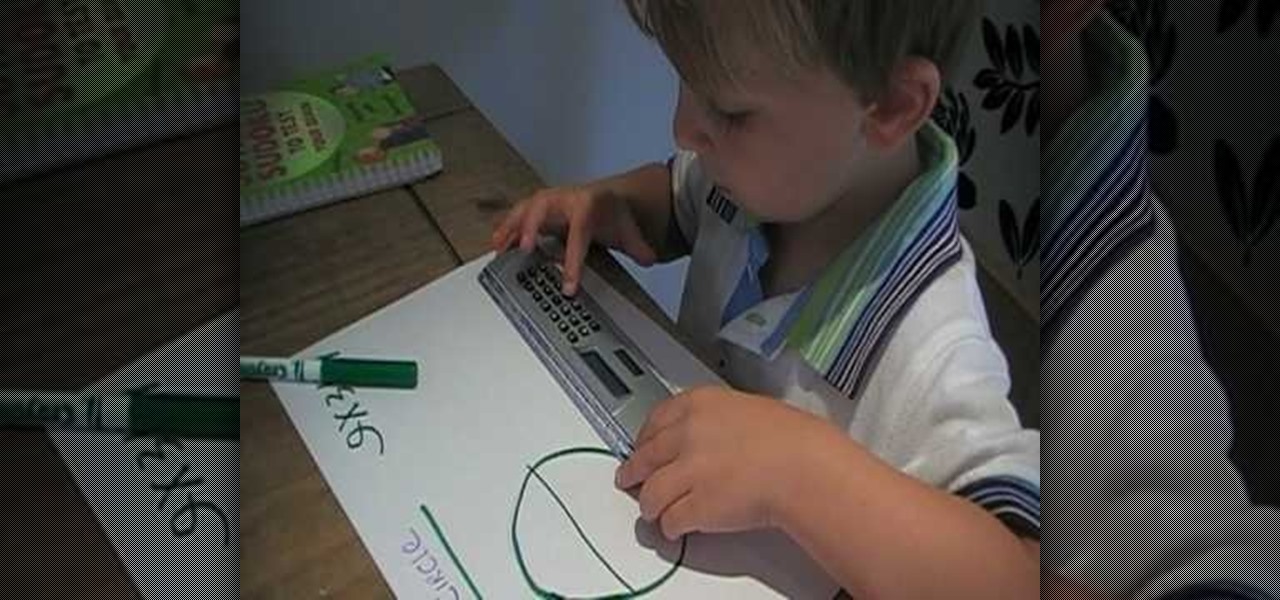
How To: Work out the circumference of a circle
Simonc1973 teaches you how to work out the circumference of a circle. You start with a circle and draw a line across the circle. That's called the diameter. You multiply the diameter with Pi, which is 3.141. The video is even more amazing being taught by Harry Chapple, a 4 year old MENSA member, who is a maths child genius. He simply takes the ruler, measures the diameter and then calculates the result of multiplying it by Pi's value. The common value for Pi is 3.14. For very accurate results...

How To: Find the vertex when graphing a quadratic equation
The instructor goes about giving a crash course on finding the vertex of a parabola. This is a very nice review of the subject but not really a complete lesson. The instructor fails to explain many of the symbols and other expressions used. The simple way taught by the instructor is the short cut to finding an otherwise complex problem. The nice thing about this technique is that there are no exceptions to this short cut. This is not what someone should learn if they wish to understand the co...
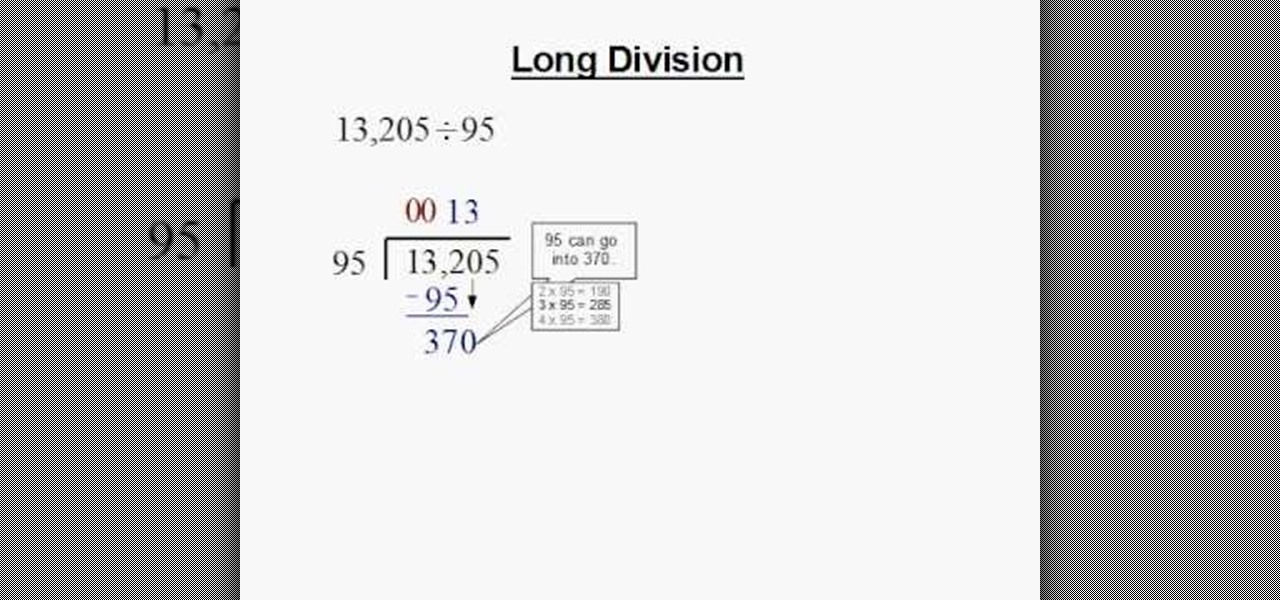
How To: Do long division problems
In this tutorial the instructor shows how to perform a long division through an example. He gives a simple method where takes the first left most number, with minimum possible digits that can be divided by the divisor, and tries to divide it by the divisor and this gives the quotient. Now he shows how to multiply the quotient with the divisor to get a value which is to be subtracted from the original divided number. Now in the third step he shows how to bring down the next digits and asks to ...

How To: Write the equation of a circle in standard form
Here you'll be shown how to take the equation of a circle, and convert it into standard form. Also, it will be explained just what standard form is, while running through the process of conversion. You'll be able to use techniques to quickly work off the numbers on the equation, one by one, until it's simplified enough to understand. Complicated algebra functions become much simpler when you see these easy to use techniques, that will help you rearrange the equation into a form that is actual...
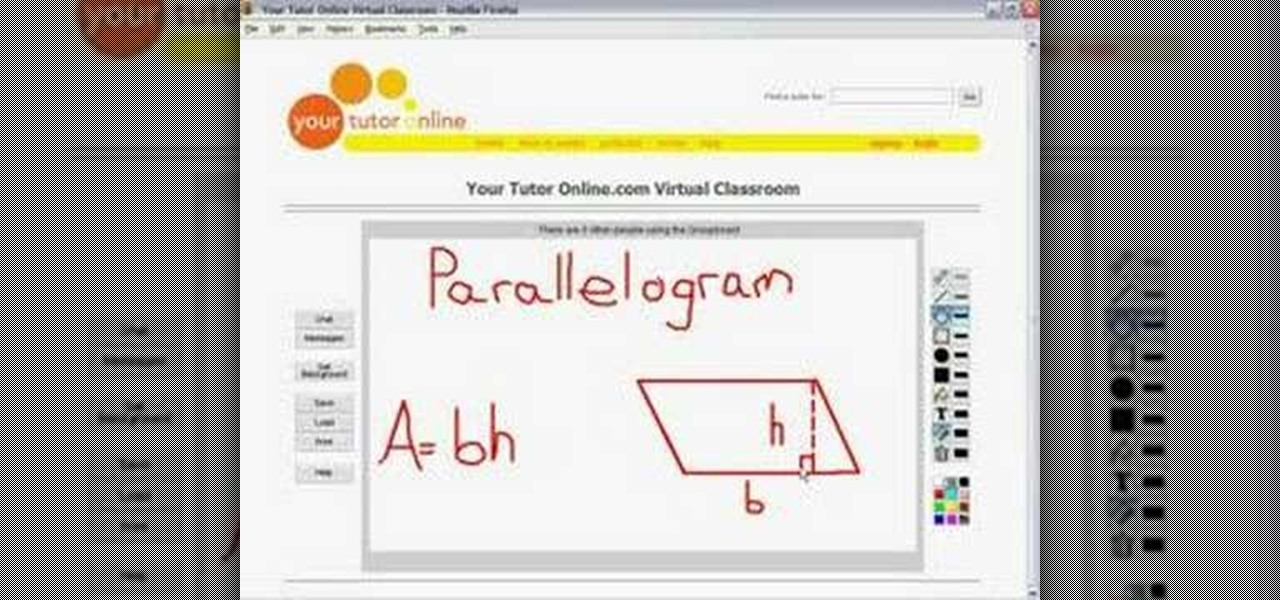
How To: Calculate the area of various polygons
We can calculate the area of the simple polygons like square, rectangle, triangle, pretty easily. Area of square can be calculated by drawing it on a graph paper, of unit cm length and breadth. Area of a rectangle is length X breadth. Area of a triangle is 1/2bh, half of product of base and height. For a parallelogram , area is the product of base and height. For a trapezoid , it is 1/2(b1+b2)h. For some other extreme polygons, we can calculate the area by making it different simple polygons ...
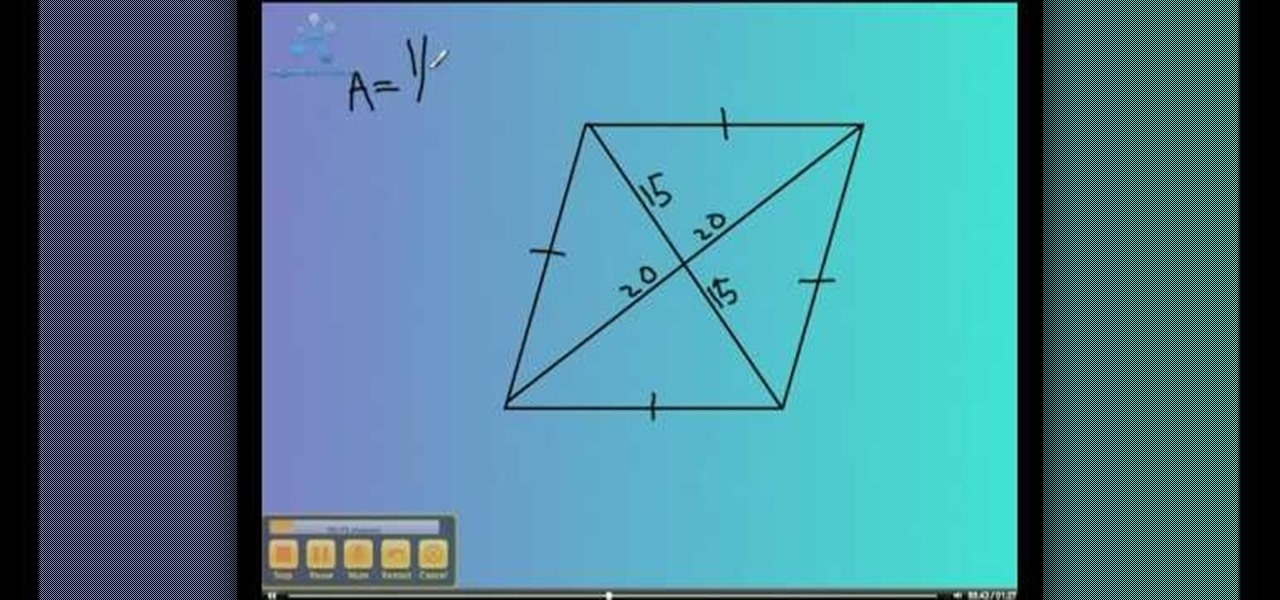
How To: Find the area of a rhombus easily
Finding the area of a rhombus is something that you will need to know in high school mathematics. In this tutorial, learn a quick and easy way to solve this type of equation in a video made especially for students, by students. This won't take you long to learn, and you will be on your way to an A in no time.
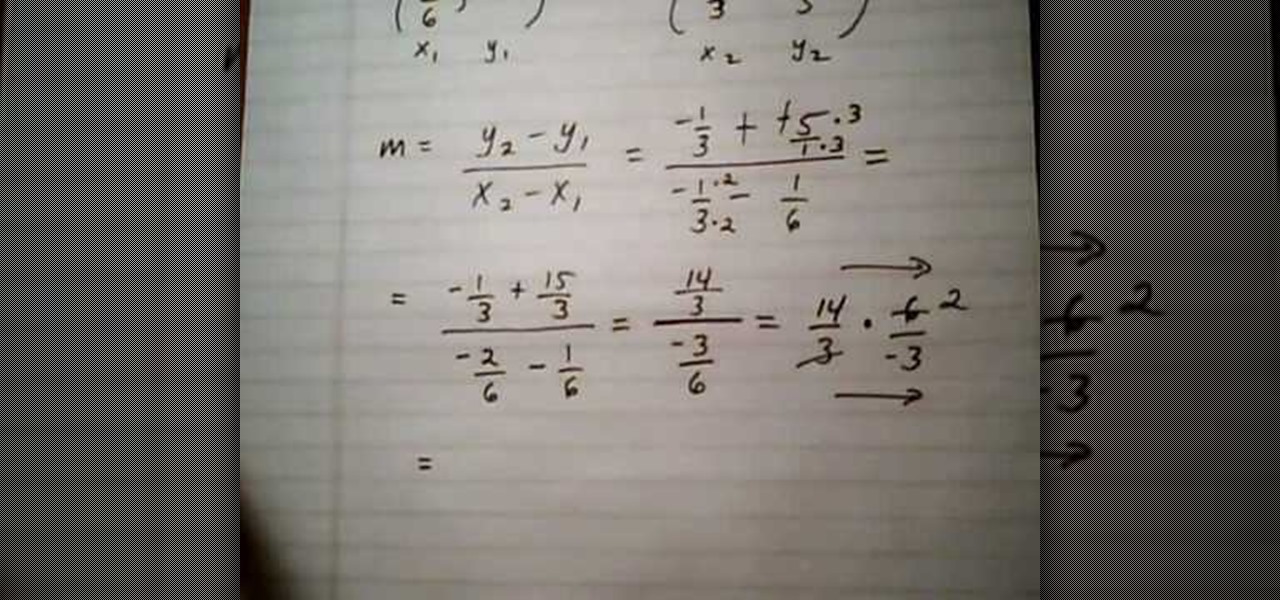
How To: Find the slope of a line given 2 points with fractions
In this video tutorial the instructor shows how to find the slope of a line given two points with fractional values. To do this first name your two points as point 1 with coordinates as x1, y1 and point 2 with coordinates x2, y2. Then substitute the values in the equation of the slope which is slope m = (y2 - y1) / (x2 - x1). Now all you have to do is simply the fraction after substituting the point values. Be careful about the signs while substituting in the formula. Now finally after solvin...

How To: Solve the two coins problem
Join Ty Yann and explore a coin puzzle with an unexpected answer. 1. Place a five hundred won coin on the top of another five hundred won coin. Make sure the top coin has the 500 level and showing. 2. Rotate the two coins, like a gear, and think of when the 500 will be straight again. 3. Will it be at quarter, a half, 3/4 or a full turn? Thing of your solution and then try it out. Were you correct?

How To: Solve a rational equation with no solution
This is a very interesting mathematical instructional video on how to find rational equation with no solution. How to solve the equation and check the answer. Let us take the example m over m-3 minus 4 is equal to 3 over m-3. In this equation we get m-4m+12 over m-3 is equal to 3 over m-3. When we simplify it further we get -3m +12 = 3. Or -3m = -9 and m = 3. This video teaches you very clearly how to solve a rational equation with no solution.

How To: Graph an equation in standard form
This video shows you how to graph an equation in standard form. In easy to understand instructions, you will learn how to find the x and y intercepts in order to put those two points on a graph, creating a line. Finding the intercepts is as easy as plugging in zero and solving for either x or y. This creates an ordered pair, which can then be graphed. The points are plotted easily on a Cartesian plane, which completes the problem.

How To: Divide rational expressions containing trinomials
In this video the instructor shows how to divide rational expressions that contain trinomials. A division containing two fractions can always be turned into a multiplication by multiplying the first fraction by the reciprocal of the second fraction. This way any division can be turned into a multiplication problem and solved easily. Now after you convert the division into multiplication factorize the equations. Now you can factorize the equations by splitting the middle term and grouping it i...
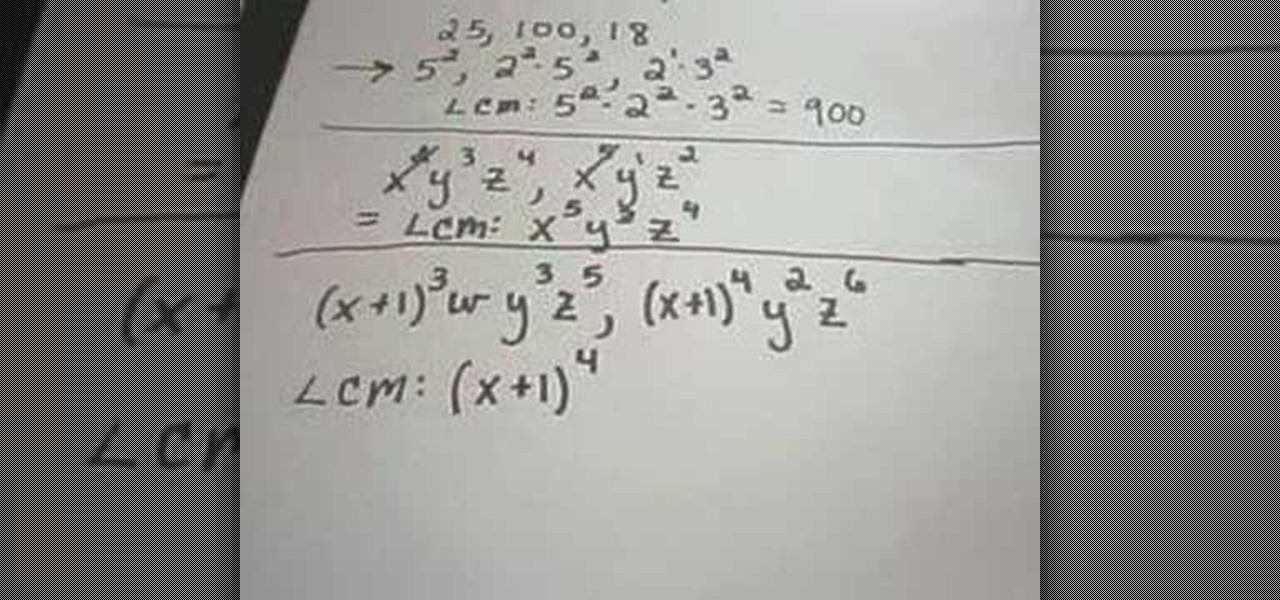
How To: Solve & find the least common multiple
This is a mathematical instructional video on how to find the least common multiple. Let us now find the least common multiple for 25, 100, 18. This can be written as 5 square, 2 square multiplied by 5 square, 2 multiplied by 3 square. The highest factor in these numbers are, 5 square, 2 square and square. If you multiply 5 square with 2 square and 3 square you will get the final answer as 900. This is the least common multiple of 25, 100, and 18. This method is explained very clearly in this...

How To: Find the area of a hexagon
In this video you can learn how to find the area of a hexagon. Visualize that the hexagon is made up of six equilateral triangles, with each side of the hexagon as the base for a different triangle. Determine the length of any triangle side by measuring it. Each side should be equal in length to any other side. L will represent this number. Determine the height of any triangle. This can be done by putting one end of your ruler at the halfway point on any side of any triangle and the other end...
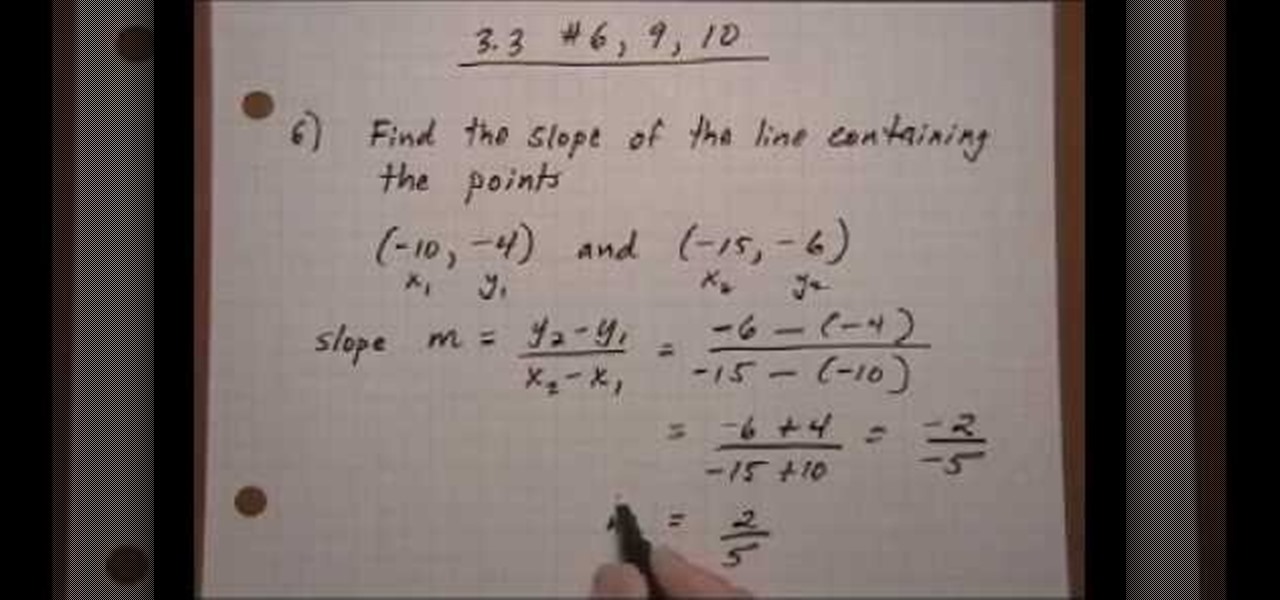
How To: Find the slope from a set of points
To find the slope of a line you must have two points and then you must plug in the two points into the slope formula. The slope formula is m= y2-y1 over x2-x1. If the slope is a fraction be sure to reduce to the lowest. Remember if a number is divided into zero it is zero, if zero is divided into the number it is undefined. A calculator can help one remember this. Horizontal lines have slopes and vertical lines do not. Drawing the lines on a graph can help you see the actual slopes and which ...

How To: Graph negative numbers on number line
The video begins with a piece of paper with questions 6 and 7 on from section 1.3. The narrator introduces these two questions as both having to do with graphing on a number line. Starting with question 6, which asks the person to graph -11/4 on a number line, the narrator draws a number line with the numbers up to -5 on the left, up to +5 on the right of 0 in the middle. She starts by showing -3 as an example, and then draws a black dot on the line at the point of the number 3. She then illu...
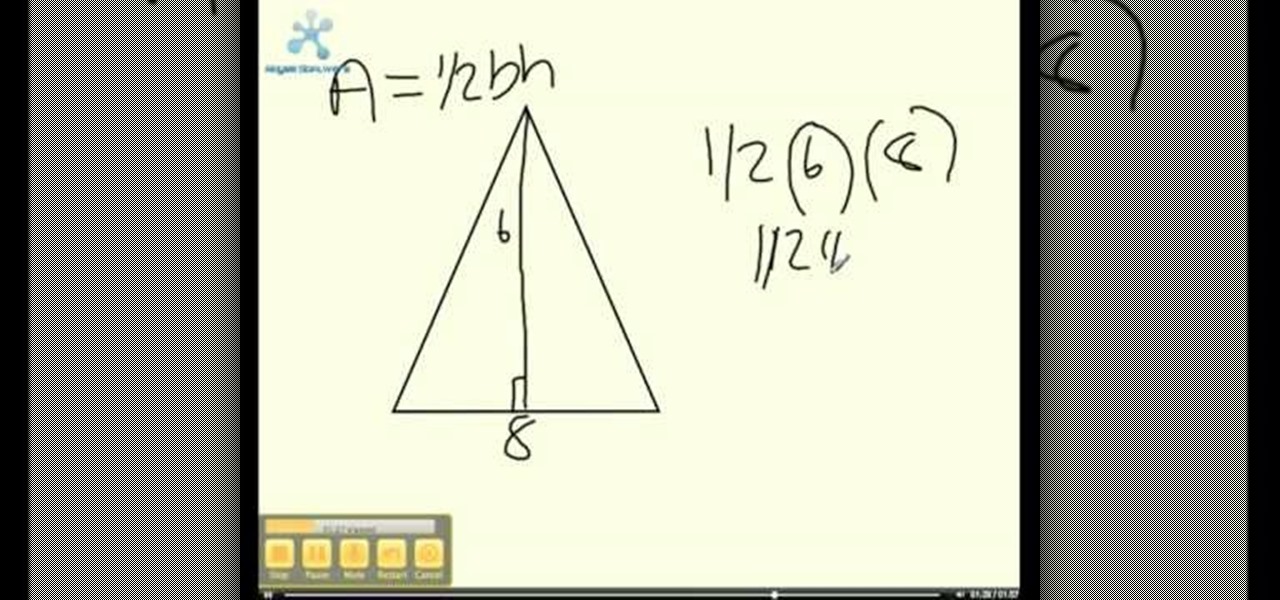
How To: Find the area of a parallelogram and a triangle
This video shows you how to easily find the area of a parallelogram and the area of a triangle. The first part of the video teaches you how to find the area of a paralellogram. The area of a parallelogram is BxH, where B is the base and H is the height. The height is obtained by drawing a perpendicular line from one corner to the base. The second part of the video teaches you how to find the area of a triangle. The area of a triangle is (BxH)/2, where B is the base and H is the height. That's...
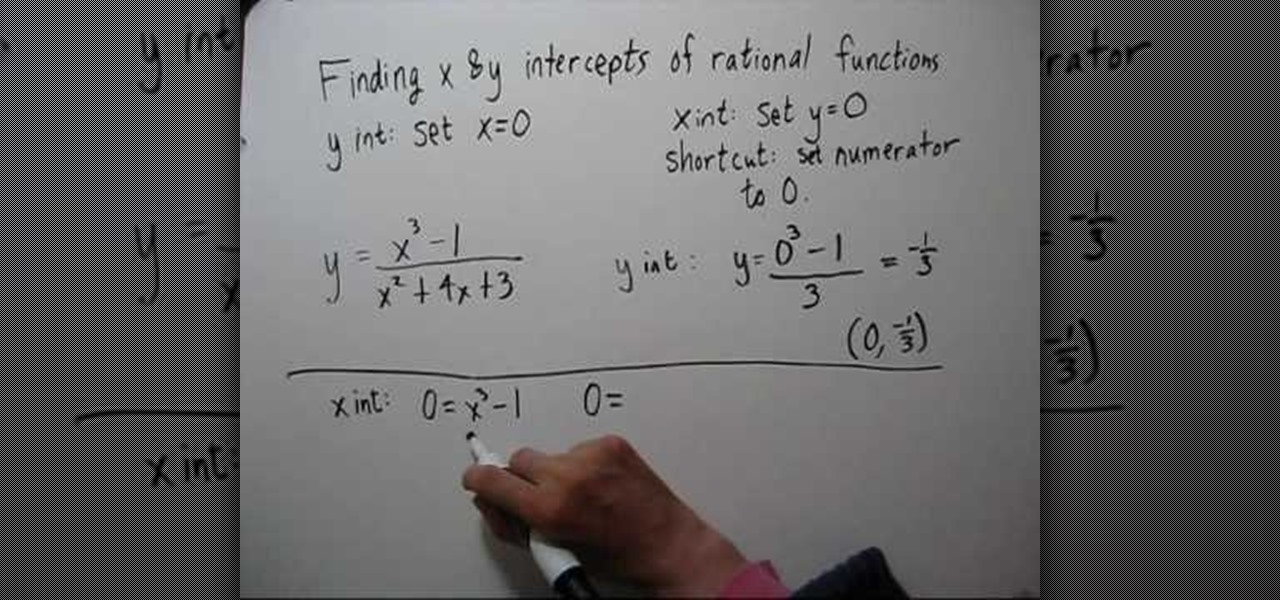
How To: Find the x & y intercepts of rational functions
In this tutorial the instructor shows how to find the x and y intercepts of rational functions. Finding the intercepts of a rational function is similar to finding the intercepts of other normal equations. You can find the x intercept of the equation by setting the value of y to zero and solving the equation. Similarly you can solve the y intercept by setting the value of x to zero and solving the equation. Now while solving this rational function for intercepts if you face a situation where ...

How To: Find the area of a trapezoid with a song
This video illustrates a way to remember how to find the area of a trapezoid using a rap song. The step-by-step song is accompanied by a chalkboard rendering of what the song is describing. The equation used is part of geometry and is a good lesson so that you can easily learn what you are supposed to do. This informative video could be used to teach or to learn how to perform this equation so that it can be properly applied.
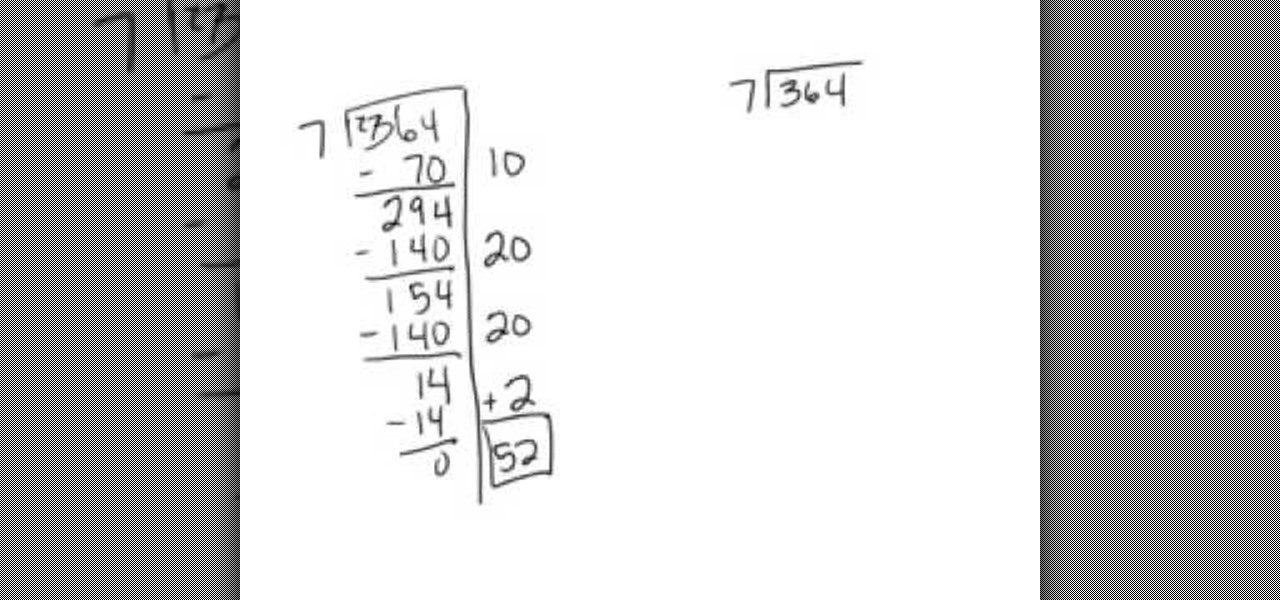
How To: Do long division with different approaches
Taking equal groups, in our case, 7 out of the whole number, in this case 364 involves guessing. A shorter method involves taking groups, in our case, 7 out of each individual number 3, 6 and 4. If you cannot take 7 out of a number, you will subtract 0 from that number and carry down the next number. For example, you cannot take 7 from 3, so you will subtract 3-0 with the answer being 3 and carry down the next number, 6, giving you 36. You can take 5 groups of 7 out. 5 groups of 7 equals 35, ...

How To: Solve a system by the elimination method
In this video the instructor shows how to solve a system of equations by elimination method. First you need to know how many possible number of solutions you can get by solving a system of equations. There are three possibilities. In the first case there are two lines with different slopes, so they intersect at a point which is the solution to that system. In second case there can be two lines with same slope but are parallel to each other. In this case the system has no solution. In the thir...
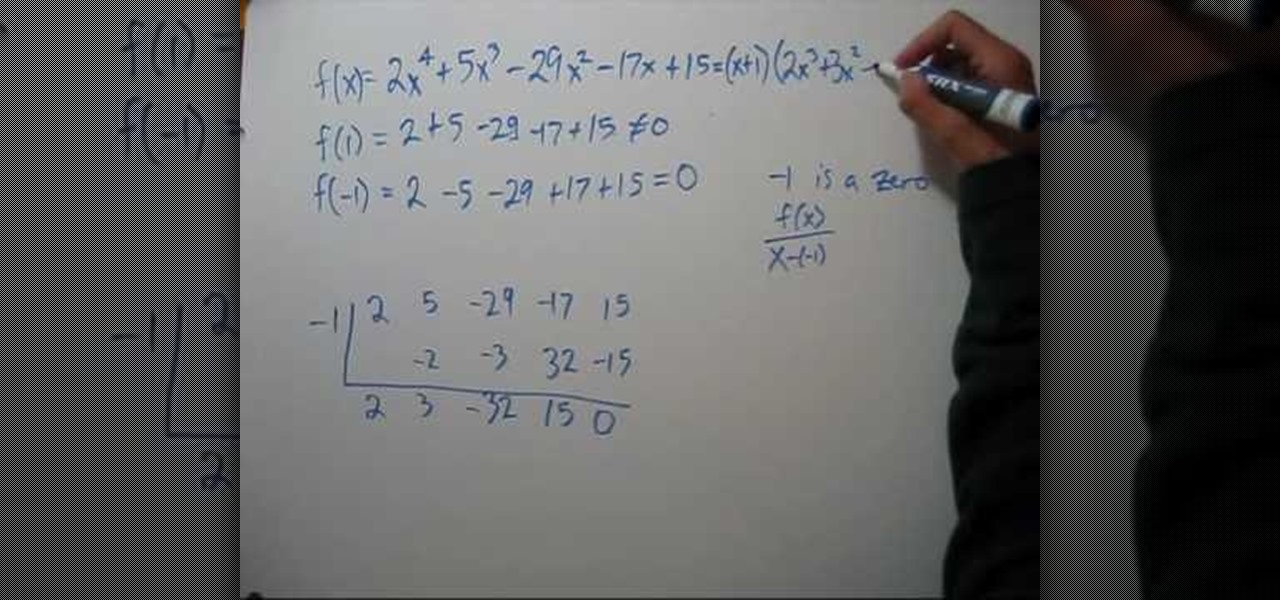
How To: Factor & find zeros of a polynomial
This is the video about how to Factor & find zeros of a polynomial. How did I know that x=1 and x=-1 were roots of the polynomial. Suppose the polynomial has a rational root, let's call it. I will assume that p and q are co prime, i.e., the fraction is reduced to lowest terms. What we will be doing is somewhat similar to "factoring by guessing" of quadratic polynomials. Since is assumed to be a root of P(x), we know that if we multiply both sides by, we obtain: Transfer them to the other side...
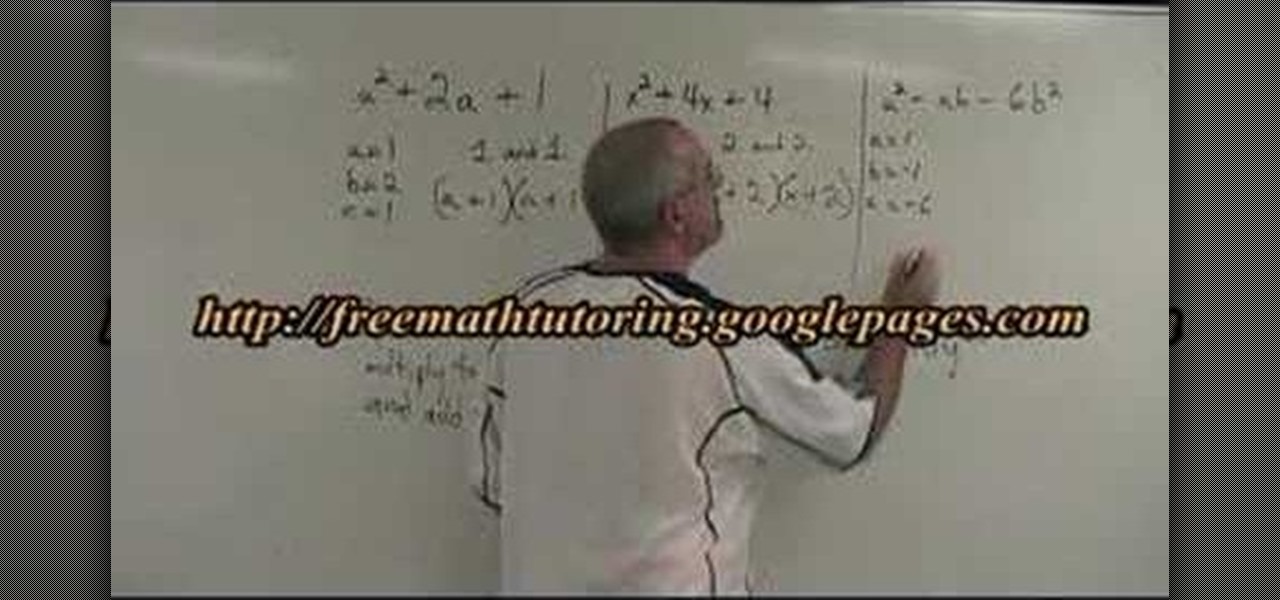
How To: Use the Simple Trinomial factoring method
In this video, you will learn how to factor a simple trinomial. You will learn how to recognize a simple trinomial, and how to completely factor the trinomial. Also, it shows you how to factor square variables. The last example in the video explains how to factor out a negative first term. You can't just drop the negative and forget it is there. The instructor teaches you how to remove this negative, then reminds you not to forget to put the negative into your final answer.




